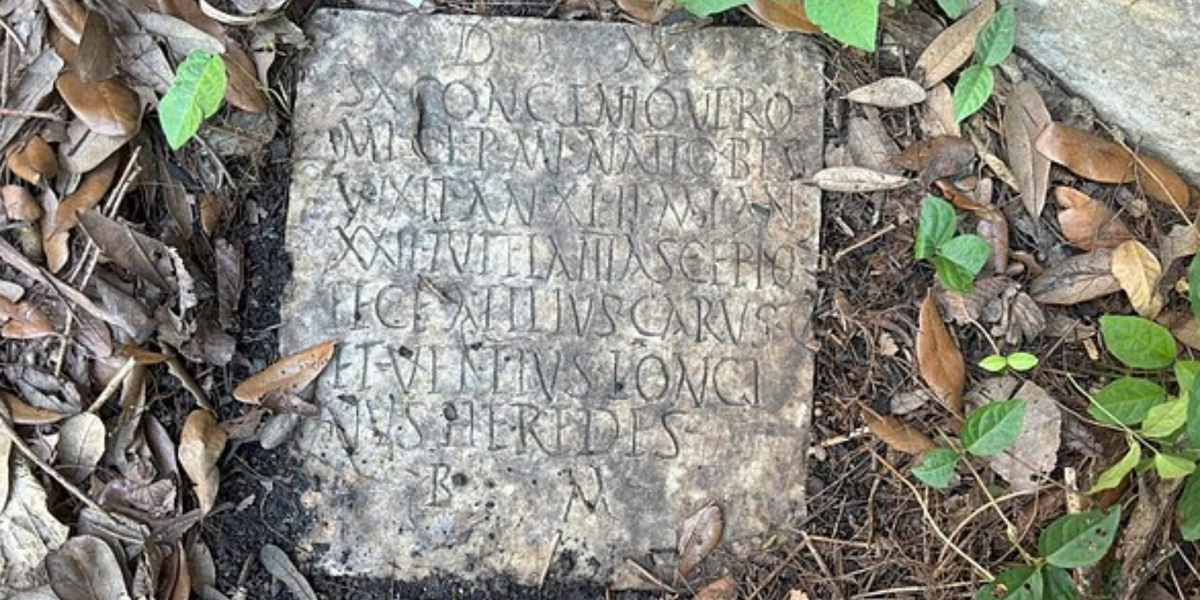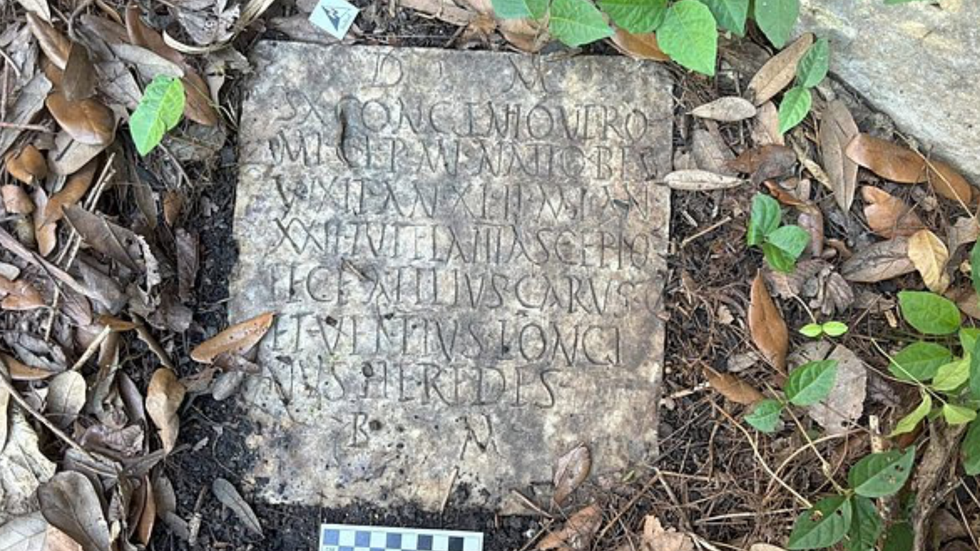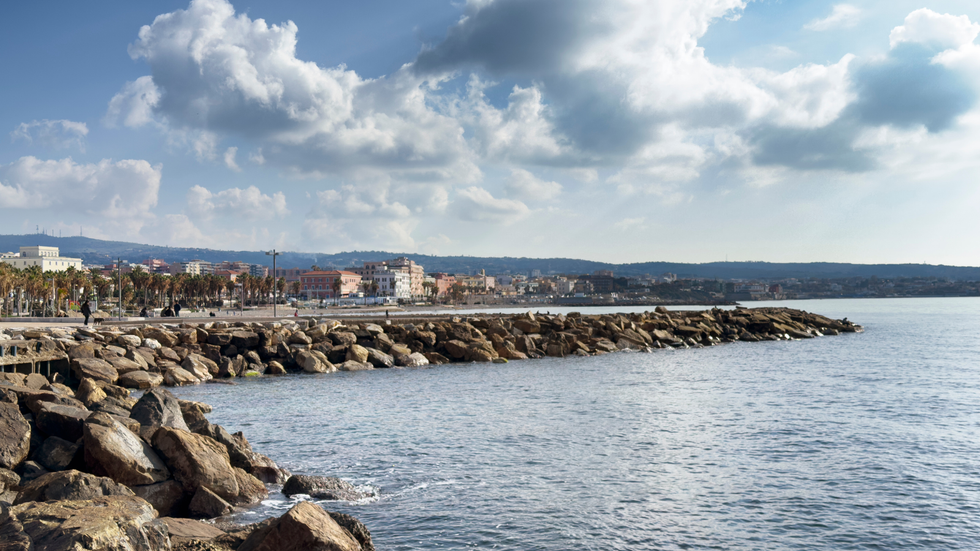



An American couple were left gobsmacked after stumbling across an ancient Roman tablet in the garden of their Louisiana home.
Tulane University anthropologist Daniella Santoro had been tidying up her overgrown garden when she discovered a mysterious marble tablet hiding among the weeds.
Ms Santoro initially believed the artifact was an old grave, but had to pause after noticing the inscriptions on the tablet were in Latin.
The anthropologist said: "I mean, you see something like that and you say: 'Okay, this is not an ordinary thing'."

Daniella Santoro had been tidying up her overgrown garden when she discovered the mysterious marble tablet
|PRESERVATION RESOURCE CENTRE OF NEW ORLEANS
Ms Santoro posted a photograph of the tablet on social media in the hopes that one of her Tulane University colleagues could provide more details on what she had found.
A colleague put the Louisiana women in touch with associate professor of classical studies at Tulane University, Susann Lusnia, who deemed the tablet was an authentic Roman artefact.
The stone was a grave of a Roman sailor called Sextus Congenius Verus and was dated as being more than 1,900 years old.
Ms Lusnia told USA Today: "When I saw the inscription, I was floored."

Ms Santoro (right) initially believed the artifact was an old grave, but had to 'pause' after noticing the inscriptions
|PRESERVATION RESOURCE CENTRE OF NEW ORLEANS
The associate professor added: "It just kind of sent a shiver down my spine."
Ms Santoro said she had "never once really considered" that the tablet she found hiding in the weeds of her home could be "an authentic artifact".
After the discovery of the ancient Roman tablet hit the headlines, Erin Scott O'Brian, the former owner of the property, said she immediately recognised the artefact after her ex-husband told her to watch the news.
Ms O'Brian said she had used the artefact as a decoration when she lived at the address, thinking it was just a "cool-a** piece of art".
The former property owner said she was "in shock" after watching a video of Ms Santoro's find.
The Roman tablet was originally discovered in the Italian city of Civitavecchia in the 1860s.
The gravestone came from an ancient cemetery dedicated to 20 Roman soldiers believed to have lived between the first and second century AD.
The Latin inscriptions on the tablet, which was commissioned by two people noted as "heirs", referred to the fallen sailor as "well deserving".

The Roman tablet was originally discovered in the Italian city of Civitavecchia in the 1860s
|GETTY
Ms Lusnia noted that the "heirs" who commissioned the tablet were most likely shipmates of the deceased sailor as those serving Roman military were prohibited from marrying.
The National Archaeological Museum in Civitavecchia was the last recorded home for the ancient tablet before it went missing during the Second World War.
Staff members at the museum confirmed that the marble artefact had been missing since the museum was destroyed by Allied bombs during the war.
Ms O'Brian said she had been given the tablet by her grandparents, an Italian woman and a Louisiana man who was sent to fight in Italy during the Second World War.
